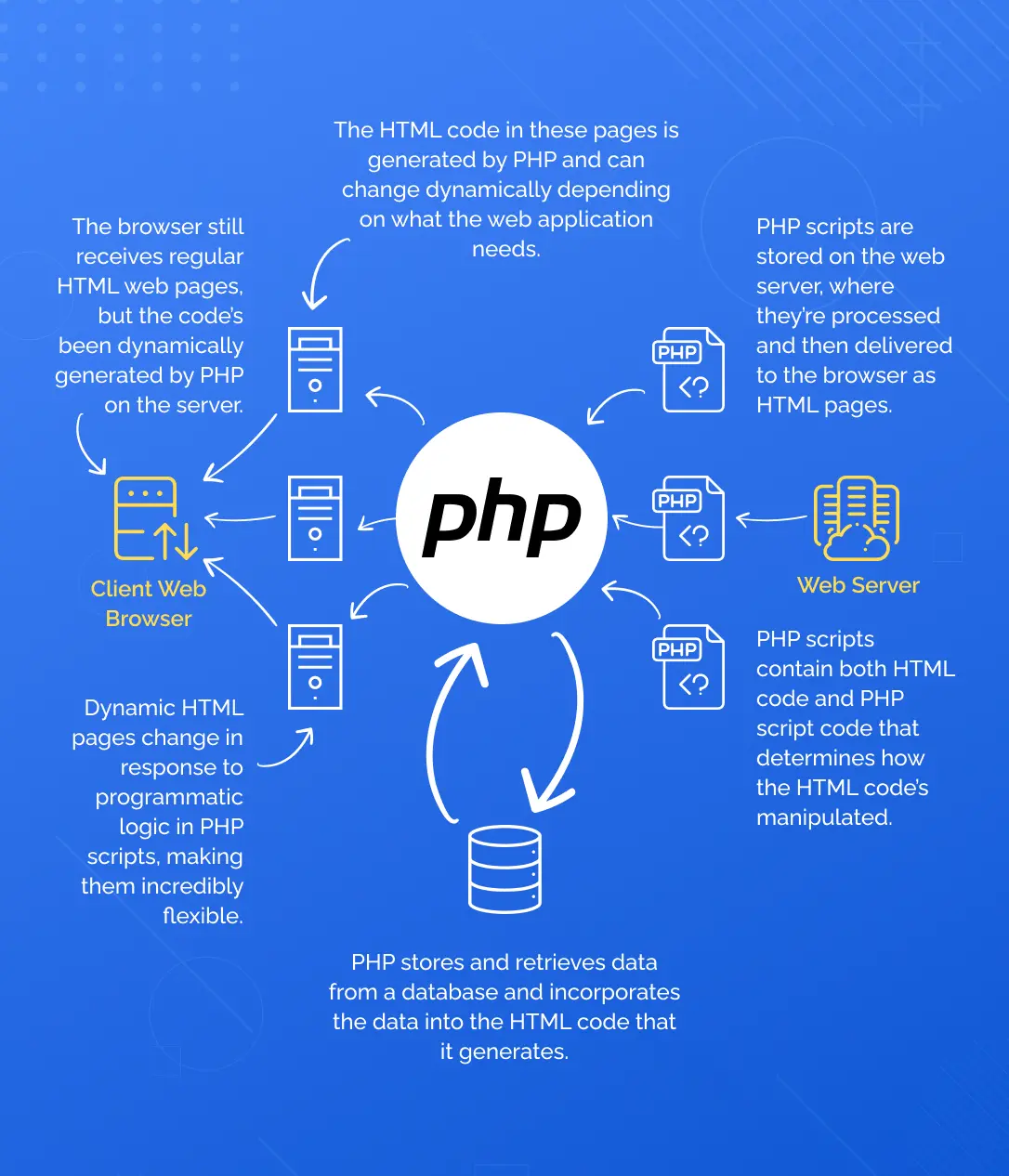Course Help Document
Welcome to the “Building Web Applications in PHP” course! This document provides you with all the necessary information, resources, and guidelines to successfully navigate and complete the course.
Table of Contents
- Course Overview
- Course Objectives
- Course Outline
- Course Materials
- Assessments and Certification
- Prerequisites
- Course Policies
- Additional Resources
- Contact Information
1. Course Overview
“Building Web Applications in PHP” is a comprehensive course designed to teach students how to develop dynamic, robust, and scalable web applications using PHP. This course covers the essentials of PHP programming, web development concepts, and practical implementation techniques to create functional web applications.
2. Course Objectives
By the end of this course, you will be able to:
- Understand the fundamentals of PHP programming.
- Develop dynamic web pages using PHP and HTML.
- Implement form handling and data validation.
- Connect to and interact with databases using PHP.
- Build user authentication and session management systems.
- Apply MVC architecture principles in web applications.
- Deploy PHP applications to a web server.
3. Course Outline
Module 1: Introduction to PHP and Web Development
- Overview of web development
- Introduction to PHP and its features
- Setting up a PHP development environment
- Basic PHP syntax and structure
Module 2: PHP Basics
- Variables, data types, and operators
- Control structures: conditionals and loops
- Functions and scope
- Arrays and array functions
- Working with strings and string functions
Module 3: Working with Forms
- Creating HTML forms
- Handling form submissions with PHP
- Validating user input
- Sanitizing data to prevent security issues
Module 4: PHP and Databases
- Introduction to databases and SQL
- Connecting to a MySQL database with PHP
- Executing SQL queries from PHP
- Performing CRUD operations
- Using PDO for database interactions
Module 5: Sessions and Cookies
- Understanding sessions and cookies
- Implementing session management in PHP
- Storing and retrieving session data
- Using cookies for persistent data storage
Module 6: User Authentication
- Building a user registration system
- Implementing login and logout functionality
- Password hashing and verification
- Protecting routes with authentication
Module 7: MVC Architecture
- Introduction to MVC (Model-View-Controller) architecture
- Structuring a PHP application using MVC
- Creating models, views, and controllers
- Routing and URL handling in MVC
Module 8: Advanced PHP Techniques
- File handling and uploading
- Working with JSON and XML
- Consuming RESTful APIs
- Error handling and exception management
Module 9: Web Application Security
- Common web application vulnerabilities
- Protecting against SQL injection
- Cross-site scripting (XSS) prevention
- Cross-site request forgery (CSRF) protection
- Secure coding practices
Module 10: Deployment and Maintenance
- Preparing your application for deployment
- Deploying to a web server (shared hosting, VPS)
- Configuring Apache/Nginx for PHP applications
- Performance optimization techniques
- Monitoring and maintaining your application
Module 11: Final Project
- Planning and designing a web application
- Implementing core features and functionalities
- Ensuring security and performance optimization
- Testing and debugging the application
- Deploying the application to a production environment
4. Course Materials
Recommended Textbooks:
- “PHP & MySQL: Novice to Ninja” by Kevin Yank
- “Learning PHP, MySQL & JavaScript” by Robin Nixon
Online Resources:
- PHP official documentation: php.net
- W3Schools PHP Tutorial: w3schools.com/php/
- Stack Overflow for community support: stackoverflow.com
5. Assessments and Certification
- Quizzes and Assignments: Quizzes and assignments are provided after each module to reinforce learning and ensure comprehension of the material.
- Mid-term Project: A project focusing on specific PHP features covered in the first half of the course.
- Final Project: Develop a complete web application using PHP. This project will be assessed based on the application of PHP principles, functionality, and code quality.
- Certification: Certificates will be awarded upon successful completion of the course, including all quizzes, assignments, and the final project.
6. Prerequisites
- Basic understanding of HTML and CSS
- Familiarity with basic programming concepts (variables, control structures)
7. Course Policies
- Attendance: Regular attendance and participation in all modules and activities are essential for successful course completion.
- Assignments: All assignments must be submitted by the specified deadlines. Late submissions may incur penalties.
- Academic Integrity: All students are expected to adhere to principles of academic honesty. Plagiarism or cheating will result in disciplinary action.
8. Additional Resources
- PHP Official Documentation: php.net
- W3Schools PHP Tutorial: w3schools.com/php/
- Stack Overflow: Community-driven Q&A for programming.
- GitHub: Host your projects and collaborate with others.
9. Contact Information
If you have any questions or need further assistance, please contact:
- Instructor: [Instructor’s Name]
- Email: [Instructor’s Email]
- Office Hours: [Instructor’s Office Hours]
